Art > STUDY GUIDE > Art history 1 | ART 101;Art History guide (test bank) | ART 101 Art History guide / Art history 1 al (All)
Art history 1 | ART 101;Art History guide (test bank) | ART 101 Art History guide / Art history 1 all units Challenges Sophia Course
Document Content and Description Below
ART 101 Art History guide / Art history 1 Challenges Sophia Course Unit 1 Challenge 1 1. What was one of Giorgio Vasari's important contributions to the development of art history? 2. Which of th... e following statements about an artist is true? 3. How is a work of art different than an artifact? 4. Which of the following is a modern form of patronage? 5. Select the true statement about New Art History. 6. Select the statement that describes art appreciation. 7. Which of the following is a technique for analyzing works of art? Challenge 2 1. The field of academic study emphasizing the cultural meaning of a work of art rather than its aesthetic value is called . 2. Which academic field would be most interested in the changing role of women in human society? 3. Because works of art can appeal to an audience on many levels, they enable viewers to make a(n) connection with the past, and with other cultures. 4. Select the two careers that require knowledge of art history. Challenge 3 1. Which two of the following are examples of three-dimensional media? 2. Paint is an artistic medium that is a combination of what two things? 3. uses materials, which react with light to capture an image on paper. A: Photography, photosensitive 4. Select the sculpture that used the technique of casting. 5. Buildings such as Frank Lloyd Wright's Fallingwater are called because they are designed to be integrated with their environment. 6. Which work of art incorporates the use of experimental media? 7. Select the work of art that is an example of new media. Challenge 4 1. Which of the following characteristics is present in this image? 2. What term corresponds with the surface of a painting? 3. Which of the following works of art incorporates the use of complementary colors? 4. Which type of line would an artist use if s/he wanted to signify emotion? 5. Identify two of the basic elements of composition included in this work of art. 6. Creating layers of paint on a canvas is a technique known as . It was often used by artists such as Van Gogh. 7. Assess Peter Paul Rubens’ Tiger Hunt (1618) according to specific design principles. Select the characteristic which is NOT present. 8. Which of the following techniques does the artist use to create the illusion of depth in this painting? 9. What does cross-hatching use to indicate shadow and depth? 10. Select the example that represents regional style. 11. The image shown is an example of . 12. Which of the following elements is present in this graffiti artwork by Banksy? A: Symbolism Milestone 1 1. Which of the following is a definition of art appreciation? 2. The idea that a work of art represents an artists unique vision, uninfluenced by other artists or other works of art, is referred to as . 3. Which of the following techniques did the artist use to create the illusion of depth in this painting? 4. Which of the following is the correct definition of sociology? Which of the following is a characteristic of this work of art? 5. Which of the following works is an example of experimental media? 6. Which of the following is a definition of aesthetic? 7. Why is the building below, designed by Frank Lloyd Wright, an example of site specificity? Which of the following is a characteristic of this painting? 8. Which of the following are terms related to photography? 9. Which of the following is the correct definition of a curator? 10. Which of the following is the correct definition of painterly? 11. Which of the following words best describes a person who provides financial support for the 12. The activities related to the governance of a state or territory describes what key term? 13. In order to give the illusion of depth in a work of art, an artist might create space between two or more objects. This space between objects is called . In a Vanitas painting, the use of a skull to represent death is an example of . Which of the following formal elements are present in this image? A: Asymmetry, balance Select the option that is true about the image below. Which of the following works is an example of new media in art? Select the term that does NOT apply to Leonardo da Vinci’s “Mona Lisa. 14. Which of the following terms best describes a style of art created by artists who shared a philosophy or goal over a period of time? 15. Which of the following is an example of visual communication? 16. Which of the following elements is present in this image? 17. Which of the following words best describes an art historical method that relies on recognition of elements of an artist’s personal style? 18. The style of artists from West Africa represents which type of style? Which of the following is a characteristic of this painting? Which of the following is the correct definition of modeling? 19. Which of the following terms is NOT defined correctly? 20. Which of the following achievements in art history is attributed to Giorgio Vasari? 21. While artists like Henri Matisse used traditional media, including oil paint on canvas, artists in the later 20th century experimented with the newly-created . A: acrylic paint Which of the following best describes the subject matter of this painting? Unit 2 Challenge 1 1. What is a characteristic of the Paleolithic period? 2. Select the statement that is true about an image when it is rendered from a descriptive point of view. 3. Which two of the following terms describe the construction of the prehistoric temples at Malta, or the people who built them? 4. Architecture of the time period associated with the Ancient Near East often made use of controlled space to express . 5. The Ancient Near Eastern people known as the Sumerians were renowned for their technical innovations. They built huge temples, called , in their cities. 6. Select the function that matches to this work of art.Challenge 2 1. Select the name of the god of sun, war, and protection, often portrayed as a falcon or a man with a falcon’s head. 2. Which two of the following are examples of funerary architecture? 3. What type of arrangement is used for the buildings shown below? 4. What does the style of the grave goods from the tomb of Tutankhamen reveal about art after the Amarna period? Challenge 3 1. What is the term used to denote the simplification of this figure's body into triangular shapes? 2. Select the statement about Minoan art and culture that is TRUE. 3. Which trait of Mycenaean architecture is represented in this image? 4. Which of the following correctly identifies a Greek deity and his or her primary association? 5. Select the option that correctly explains the function of the vase shown below: 6. What physical characteristic is exhibited in this sculpture? 7. Which part of a temple would house sculpture as seen in the image? 8. Select the feature or characteristic that is present in the image of the Parthenon. 9. Which of the following sculptures is from the Hellenistic period, just like the Nike of Samothrace? Challenge 4 1. How did Etruscans influence Roman architecture? 2. Which term, associated with Etruscan art and architecture, describes a coffin made of stone that is typically adorned with sculpture? 3. Think about the overall layout and function of a Roman house. Select the statement that describes BOTH the atrium and the peristyle garden. 4. A celebration of the experience and age of a person in Roman sculpture is known as the style. 5. Why did Roman emperors build large entertainment complexes like baths and amphitheaters? 6. How is the interior of the Pantheon illuminated? 7. Which two of the following statements are true about architecture in the later Roman Empire? Challenge 5 1. What is the identity of this figure? 2. Where did the Buddhist Sangha first come into existence, through the enlightenment of Kondanna? 3. Visitors enter the Great Stupa through a decorative , or gateway. Once inside, visitors meditate by circumambulating. 4. What is a yakshi? 5. What are the oldest and most authoritative texts in Hinduism? 6. Which of the following is a characteristic of the Gandhara period? Milestone 2 Which of the following terms describes the Neolithic civilization which built Stonehenge? 1. Which of the following statements best defines "circumambulation?" 2. An object that holds cultural or historical significance is called a(n) . 3. Which of the following is the name for the important pilgrimage site where the Buddhist Sangha came into existence? 4. Select the statement that is FALSE about Yakshi figures. 5. Which of the following does NOT correctly describe a Roman atrium? 6. Which of the following characteristics apply to items used in Sumerian religion? 7. The stones that make up an arch, common in Roman and Etruscan architecture, are called . Which of the following characteristics are present in this image from Chauvet Cave? 8. Which of the following correctly identify a Greek deity and his or her primary association? 9. Think about the early forms of religion in India and how they differ. Where did the Buddhist Sangha first come into existence through the enlightenment of Kondanna? 10. Which of the following is a type of tomb that includes a room to house the ka statue? 11. Which of the following does NOT correctly describe the type of architecture represented in the image? 12. Compare and contrast the Parthenon to the Colosseum. Select the statement that is reflective of the Colosseum. 13. Which of the following is NOT a Sumerian innovation? Which of the following describes the function of the Stele of Hammurabi? The temple of Amun-Mut-Khonsu is a classic example of a(n) , because of its use of huge entry gate. 14. Which of the following is NOT a characteristic of sculpture at the Parthenon? 15. Select the statement that is TRUE about Chaitya Hall. 16. Which of the following is a characteristic of the Basilica at Trier (Aula Palatina)? 17. Which of the following sculptures represents the emphasis on a more relaxed, exaggerated posture, characteristic of the Late Classical period? 18. Select the trait of Mycenaean architecture that is represented in this image 19. What keeps the massive dome of the Pantheon from collapsing? 20. A Greek courtyard that is surrounded by columns is known as a(n) . 21. Which of the following works of art is from the Amarna Period? 22. Select the work of art representative of the Aegean period. 23. Which of the following is the name of the oldest and most authoritative Hindu religious texts? 24. What is an important trait Minoan artworks share? 25. Which of the following civilizations was the primary influence on Etruscan tomb architecture? 26. Select the option that describes the style of this vase. 27. Which of the following correctly describes this image? Unit 3 Challenge 1 1. What term best describes an image of a person in the early Christian position of prayer?’ 2. How does this image of Christ differ from earlier images of Christ? 3. What distinguishes a cathedral from a church? 4. What architectural feature makes the dome of the Hagia Sophia possible? 5. Which of the following best defines the word "iconoclasm?" Challenge 2 1. How did Byzantium influence the aniconic nature of Islamic art? 2. According to Islamic beliefs, what is the significance of the location of the Dome of the Rock? 3. Why do we see the proliferation of small art objects in Islamic art? 4. What term describes a balcony built on an upper floor to provide an open view? Challenge 3 1. What phenomenon is common to the history of both China and Japan? 2. Chinese architecture is characterized by the use of . This feature can be seen in the main form of Chinese Buddhist architecture, which is known as a pagoda 3. How is the concept of li expressed in this painting? 4. What happened during the Heian period? 5. What term describes a pillared outdoor hall for public ceremonies? Challenge 4 1. The colossal head is an example of art from the civilization, which was located in the region known as Mesoamerica. 2. Which of the following is an architectural technique used by the Maya? 3. Enormous images of spiders, hummingbirds, and other animals were carved into the ground by the civilization. 4. Which two of the following works of art or architecture are Mayan? Challenge 5 1. Select the term that does NOT apply to the image of a carpet page from the Lindisfarne Gospels. 2. Which of the following is NOT a feature of Romanesque architecture? 3. What was the purpose of this sculpture for medieval church visitors? 4. What architectural features allowed for the increased size of windows in Gothic churches and cathedrals? 5. Select the option that best describes a nave. Challenge 6 1. Select the characteristic that is represented in this painting. 2. Select the FALSE statement about the image. 3. Match this image to the correct artist and title. 4. What painting medium became especially important in Renaissance Italy? 5. Select the religion that corresponds to this work of art. 6. How did Brunelleschi solve the problem of designing a dome for the Florence Cathedral? Milestone 3 1. Which of the following terms is NOT associated with Romanesque portal sculptures? 2. Which of the following is the correct definition of "flying buttress?" Which of the following correctly defines "mandorla?" 3. Select the option that best describes "Zen." 4. Santa Sabina is an excellent example of a(n) or columned hall, based on the form of public buildings in ancient Rome. 5. Which of the following artists was NOT associated with the early Renaissance in Florence? Which of the following was Brunelleschi's design solution to the problem of building a huge dome on the Cathedral of Florence? Which of the following characteristics are present in this work of art? 6. The fountains and the muqarnas vault of the Alhambra are decorated with the writings of . 7. Where is the Dome of the Rock located? 8. Which of the following is an example of early medieval Carolingian or Ottonian art? 9. What is the correct term for the underground cemeteries where some of the earliest examples of Christian art are located? 10. What is the title of this work of art? A: Christ as Good Shepherd from Galla Placidia This mural depicting a Mesoamerican goddess was found in which ancient city? 11. Which of the following correctly identifies the title and artist who created this work of art? Which of the qualities listed below are present in Lorenzetti's Peaceful City from Effects of Good Government in the City? 12. Select the FALSE statement about Islamic art. 13. Which of the following architectural features is present in this image? Which of the answer choices correctly identifies the type of Buddhism depicted in this image? 14. Which of the following characteristics is visible in this image of Temple I at Tikal? Which of the following terms refers to the innermost sanctum of a Hindu temple? 15. Which of the following works of art is from South America? 16. What is the name of the script that is used in the oldest form of Islamic calligraphy? 17. Which of the following is the correct title of this work? 18. Select the religion that corresponds to this work of art. 19. Which of the following terms refers to the two figures that flank the Buddha in this image? 20. Which of the following works is from South America? Which of the following correctly defines “Pantocrator?” Select the architectural feature that is NOT characteristic of Durham Cathedral. Final Milestone 1. Select the true statement about Islamic art between the 11th and 13th centuries. A: Kufic is the name of the script that is used in the oldest form of Islamic calligraphy. 2. Which of the following is the best definition of formal analysis? Which of the following qualities are present in this painting from Lascaux? Select the statement that is FALSE about Yakshi figures. Which of the following best describes this sculpture? 3. Which of the following is the correct definition of an art appraiser? A: Someone who determines the monetary value of works of art Which feature of Romanesque architecture is present in this image? 4. Which of the following works of art is from the Amarna Period? 5. Which of the following terms refers to the economic circulation of works of art? 6. The development of stone tools, cave paintings, and sculpted figures characterize the era of prehistory. Which of the answer choices lists a characteristic that is NOT present in the Arch of Constantine? 7. Which of the following is an example of traditional media? 8. The use of intersecting lines in a drawing to indicate areas of shadow and depth is called . 9. Which of the following correctly identify a Greek deity and his or her primary association? 10. Select the FALSE statement about Islamic art. 11. Which of the following is NOT an architectural work associated with the early Renaissance in Florence? 12. Which of the following terms are associated with Byzantine art or architecture? 13. The simplest and oldest order used in Greek temples was the order 14. Which of the following does NOT describe this sculpture? 15. Select the option that correctly explains the function of the vase shown above. Which of the following characteristics apply to this painting? 16. Which of the following is a characteristic of Byzantine art? 17. Which of the following is an example of Romanesque art which depicts the events leading up to the Battle of Hastings? 18. Which of the following terms refers to a type of Chinese architecture based on the form of a stupa? [Show More]
Last updated: 2 years ago
Preview 1 out of 15 pages

Buy this document to get the full access instantly
Instant Download Access after purchase
Buy NowInstant download
We Accept:

Reviews( 0 )
$18.00
Can't find what you want? Try our AI powered Search
Document information
Connected school, study & course
About the document
Uploaded On
Aug 28, 2020
Number of pages
15
Written in
Additional information
This document has been written for:
Uploaded
Aug 28, 2020
Downloads
0
Views
174

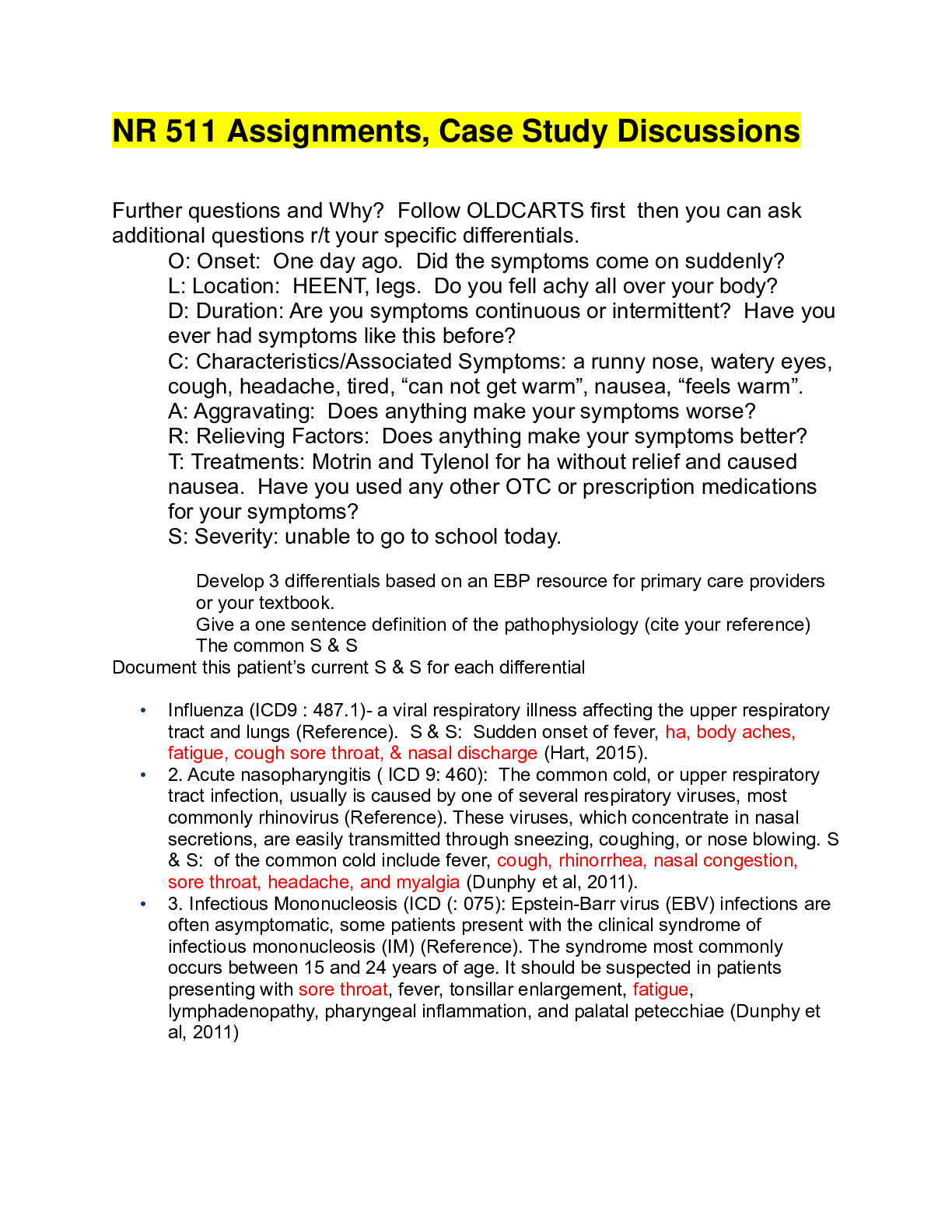





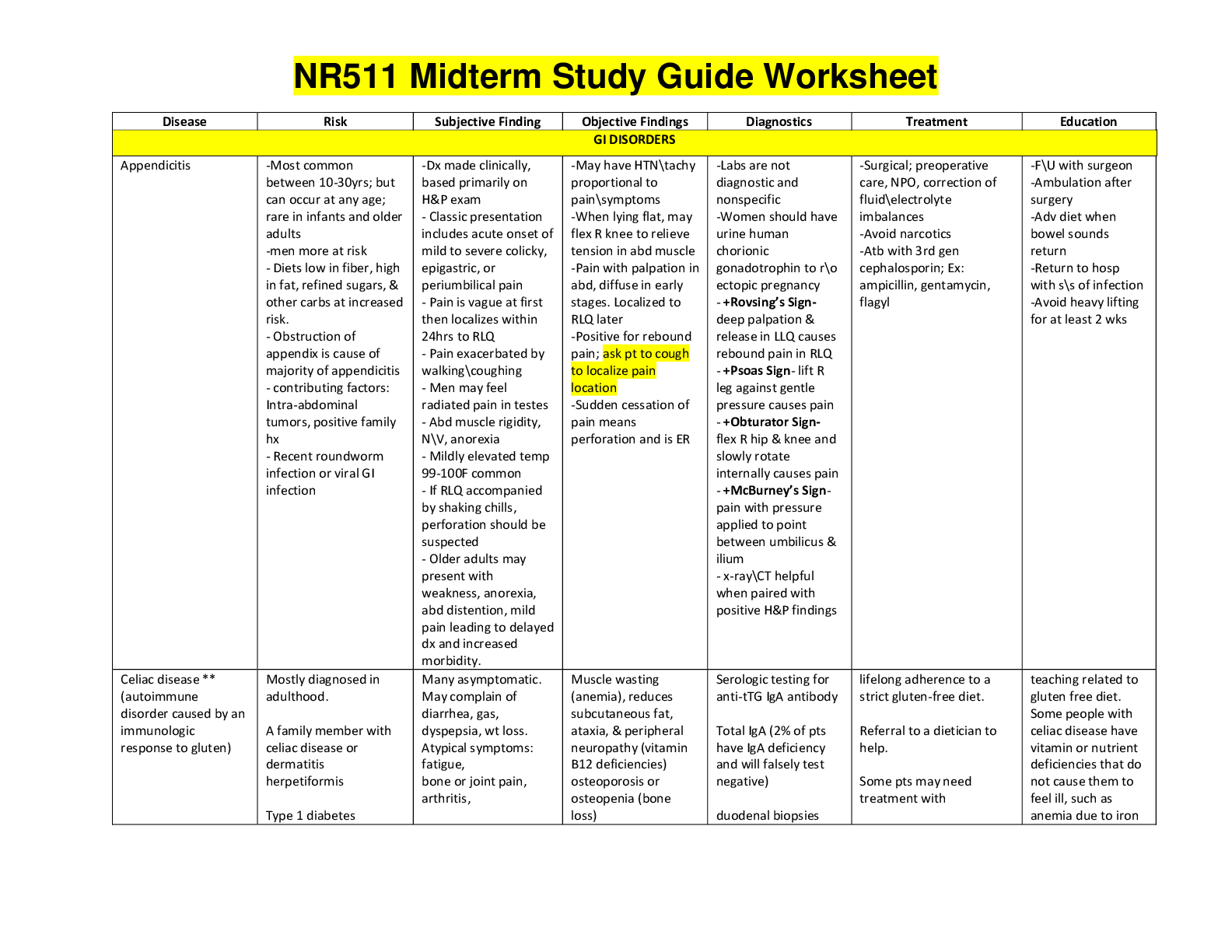
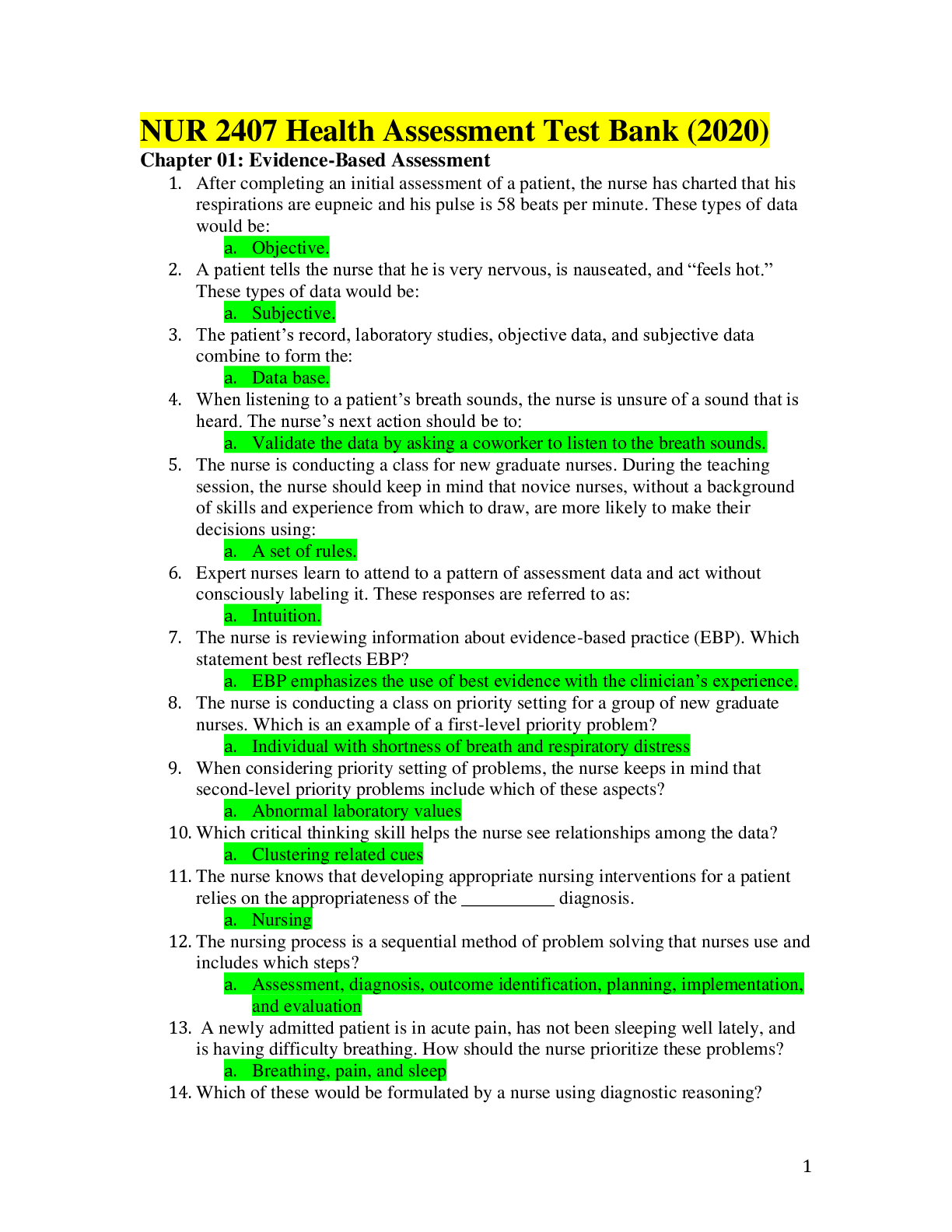

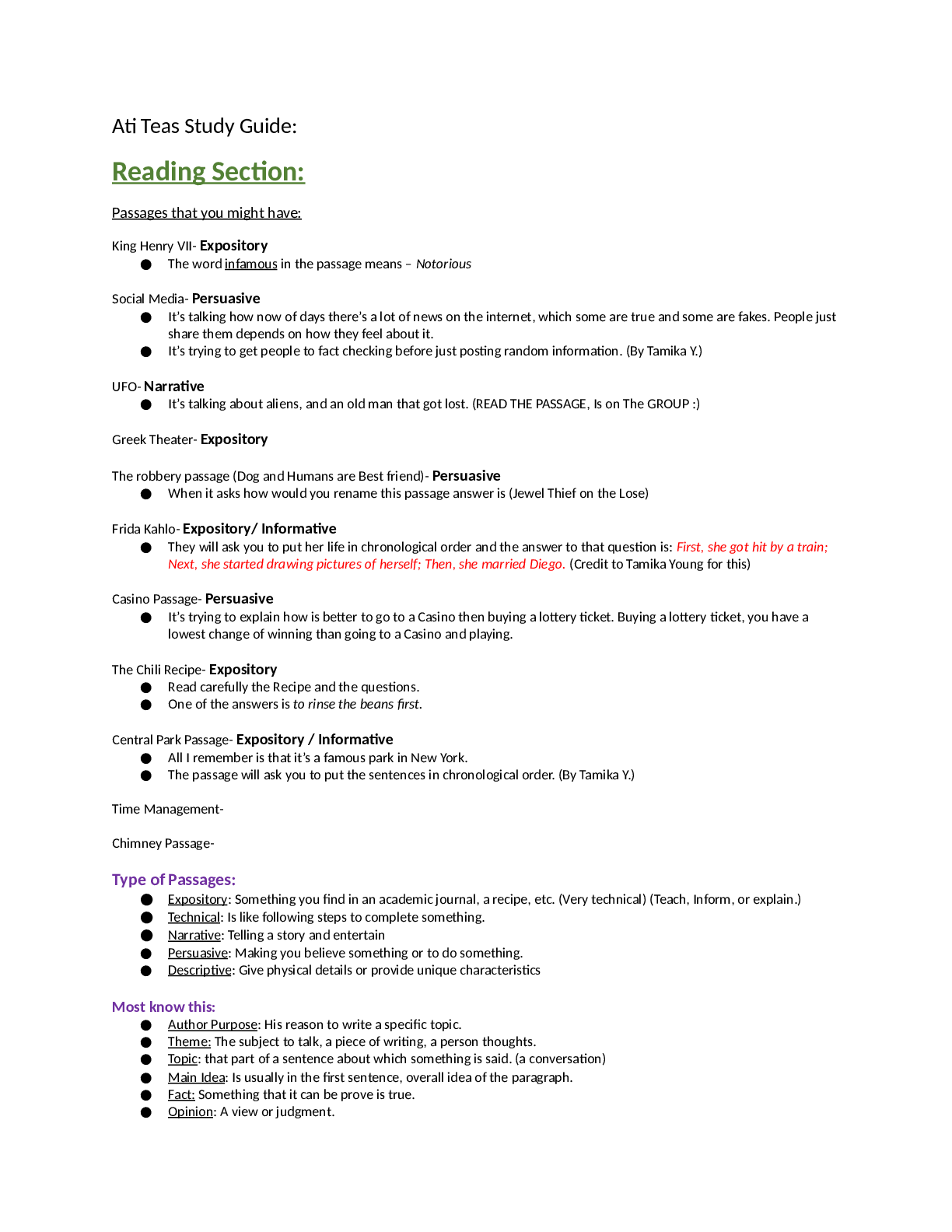
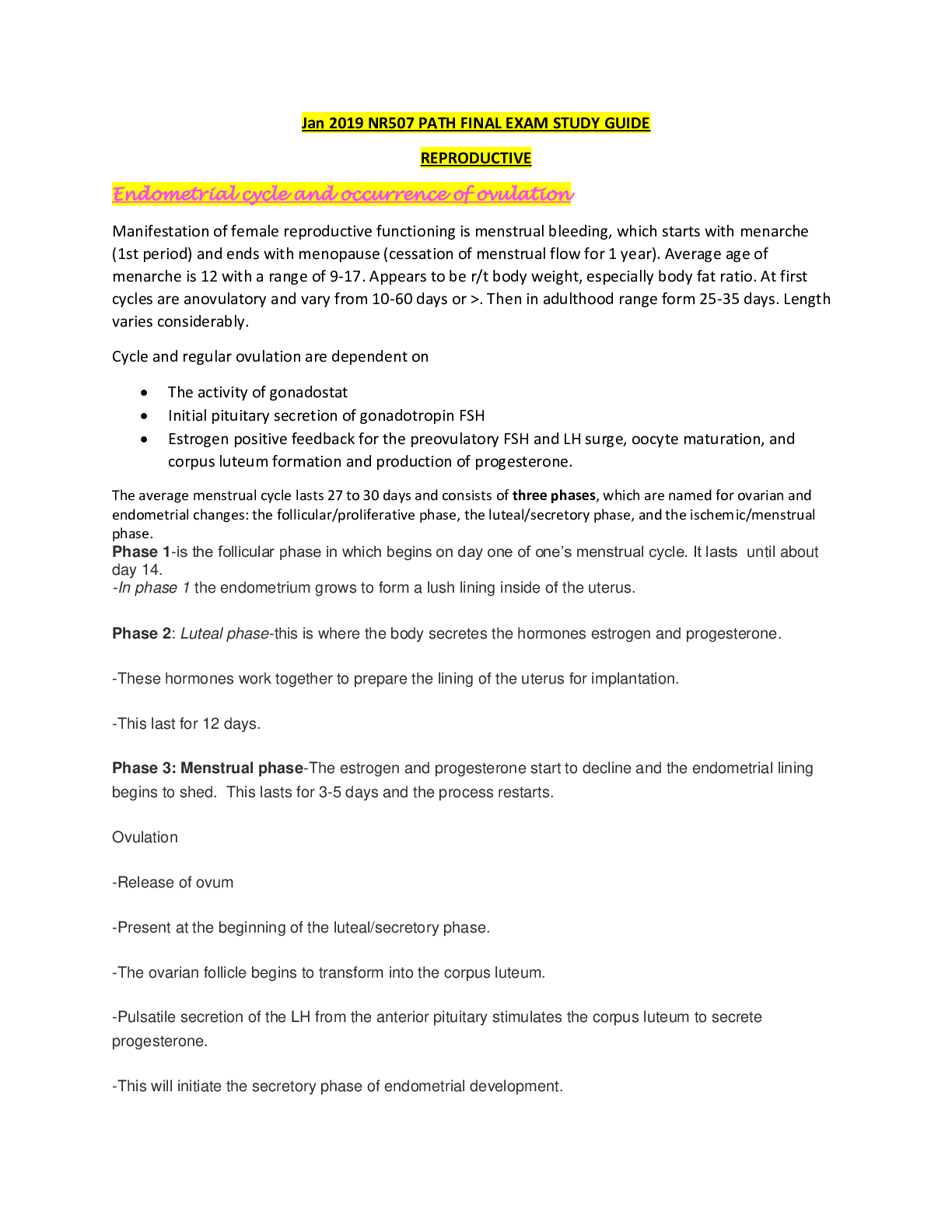
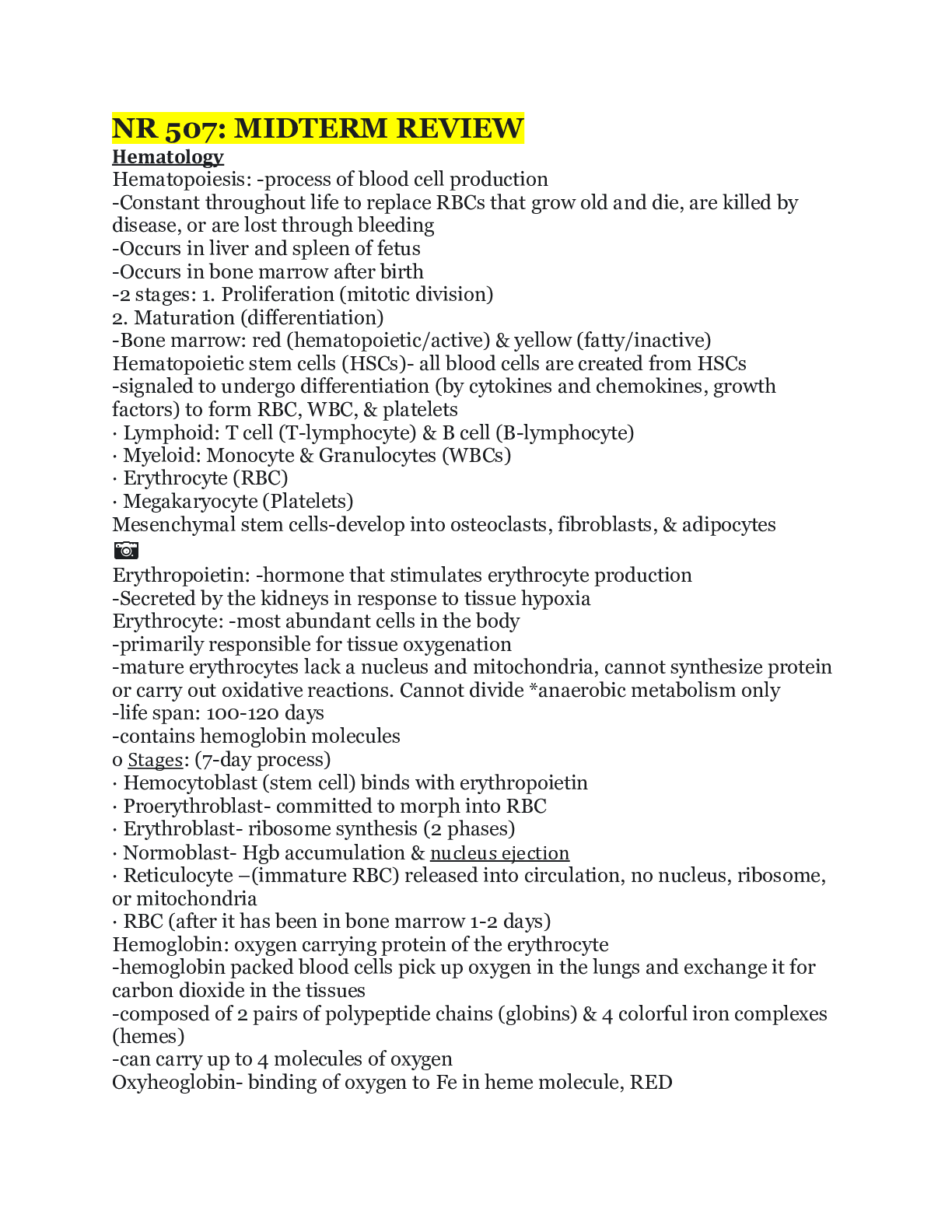
_Score 2831 Art history 1 Challenge Milestone 1 unit 1 Sophia Course (solution).png)

